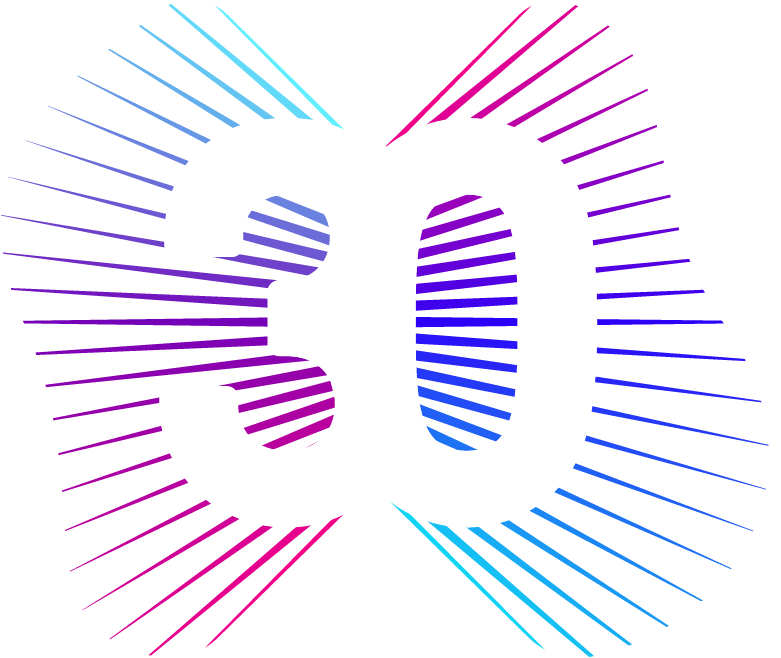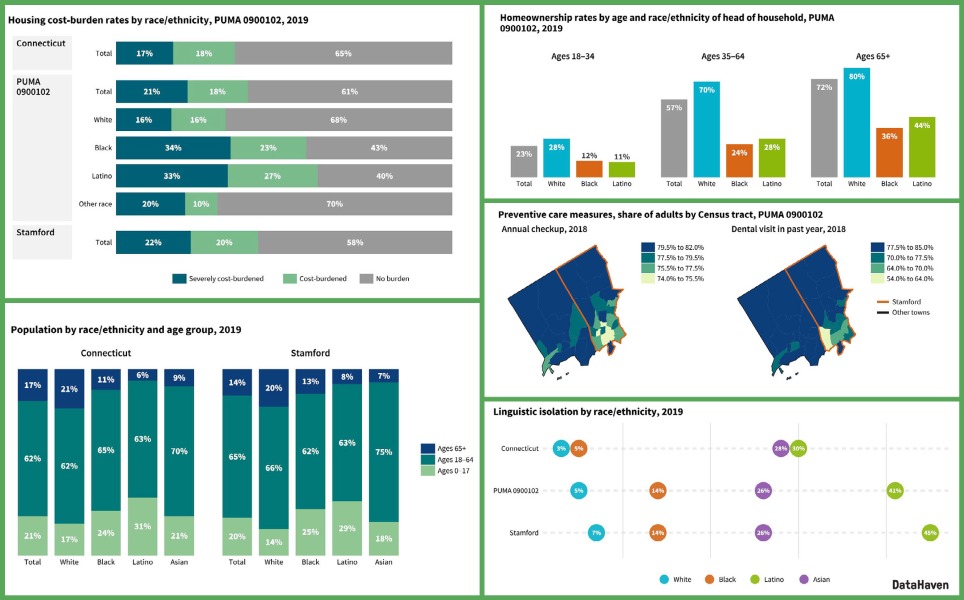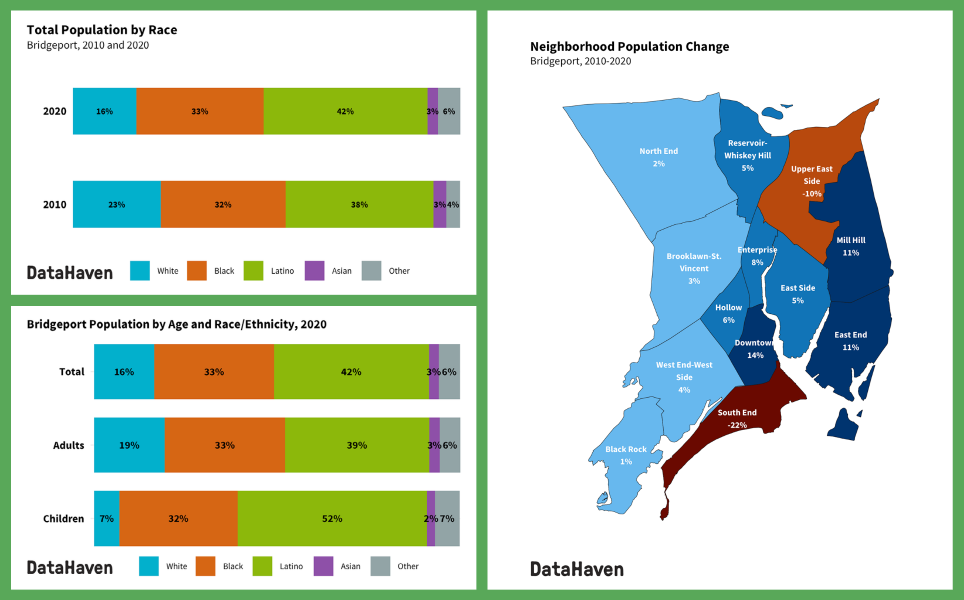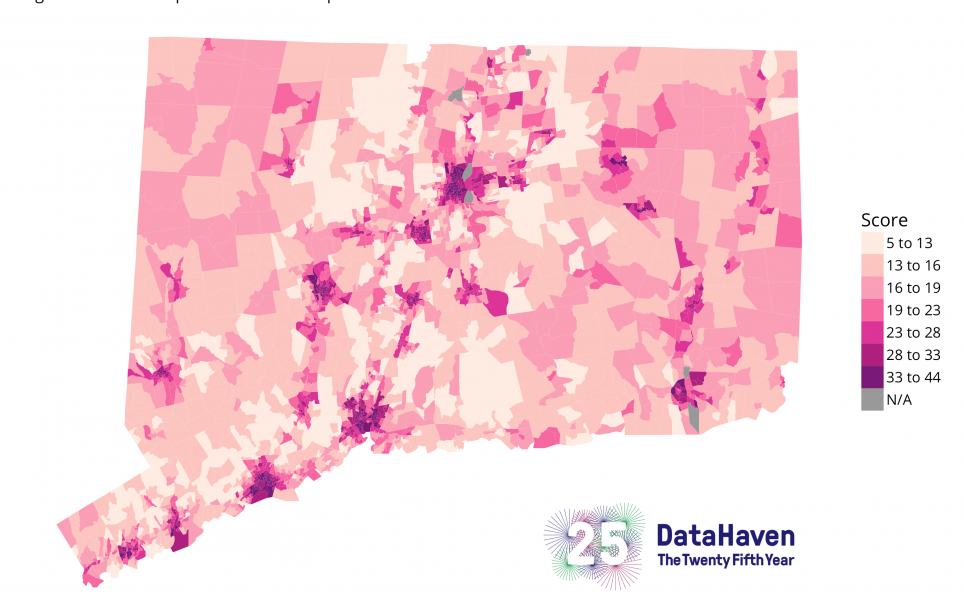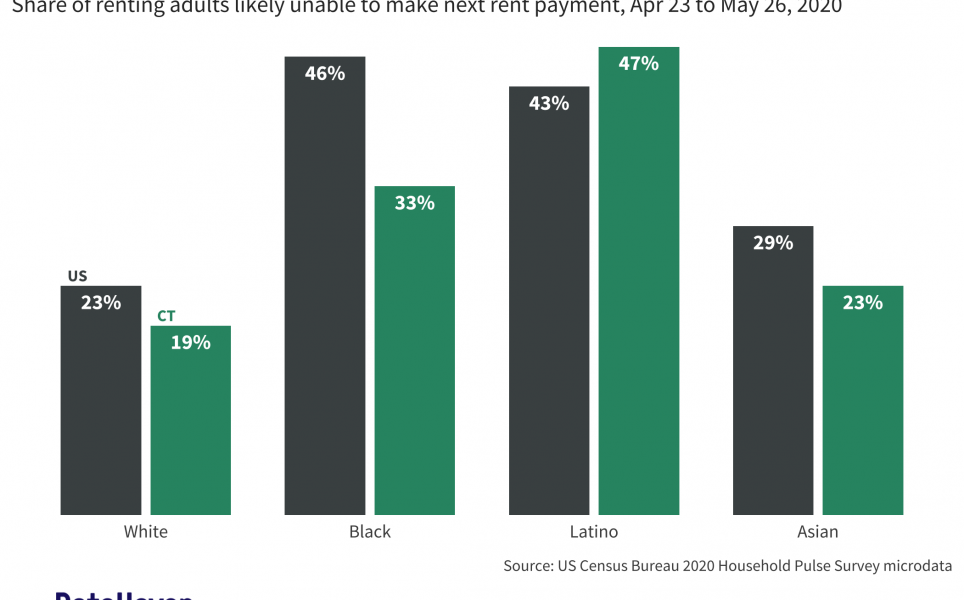Authored By
DataHaven
Date
August 08, 2023
Partners
Emily Hall Tremaine Foundation, Sustainable CT, Yale Cancer Center, The Community Foundation for Greater New Haven, Hartford Foundation for Public Giving, Fairfield County's Community Foundation, Hartford HealthCare, The Connecticut Project, DataHaven Community Wellbeing Survey partners
Access the reports for all 169 Connecticut towns
The current reports represent version 2.0, and were published in August 2023 for all Connecticut towns (and many other geographic regions). Version 1.0 was released in 2021 and version 3.0 is planned for 2025.
Town-level data may also be found in our Connecticut Town Data Viewer, available on our Data Dashboard.
About the Reports
The DataHaven Town Equity Reports disaggregate data from the 2020 Census, American Community Survey microdata files, DataHaven Community Wellbeing Survey record-level files, and federal and state agencies to create relevant town-level information that is not available from any other source. These innovative and user-friendly reports are informing many local- and state-level efforts to improve community well-being and racial equity.
DataHaven has published reports for each of the 169 towns in Connecticut. Additionally, DataHaven has created reports for state agency service areas, counties, Councils of Governments (Census County Equivalent Entities), and many other areas, based on groupings of towns. Individual report graphics are available on request. Please contact DataHaven with suggestions for the next edition.
Reports for geographic regions
Reports for many larger geographic areas based on groupings of towns, such as DMHAS Regions, Councils of Governments (COG) service areas, hospital service areas, or custom-defined areas, may be found on the reports section of our website, or by request. These reports are designed to correspond with the town-level reports. Please contact us to learn more.
Data User Guides
A more thorough narrative discussion of the issues covered in the Town Equity Reports may be found in our Community Index reports and our statewide health equity report.
Acknowledgements
The town equity reports are supported by a generous grant from the Emily Hall Tremaine Foundation. Support also comes from The Community Foundation for Greater New Haven, Yale Cancer Center, and individual donors. This report was refined through suggestions and in-kind support from Sustainable CT as well as local organizations and residents throughout Connecticut. Support for the DataHaven Community Wellbeing Survey (DCWS), one of the key data sources used in this report, comes from more than 80 public and private partners. Major sponsors of the DCWS include the Hartford Foundation for Public Giving, Fairfield County’s Community Foundation, Connecticut Community Foundation, Valley Community Foundation, Connecticut Health Foundation, Greater Waterbury Health Partnership, Health Improvement Alliance of Greater Bridgeport, Yale-New Haven Health, Hartford HealthCare, Nuvance Health, Trinity Health of New England, Stamford Health, Griffin Hospital, City of Hartford, Ledge Light Health District, and others. Visit DataHaven (ctdatahaven.org) for more information. This report was authored by Camille Seaberry, Kelly Davila, and Mark Abraham of DataHaven.
Suggested Citations
Seaberry, C., Davila, K., Abraham, M. (2023). [Town] Equity Report. New Haven, CT: DataHaven. Published August 2023. More information at ctdatahaven.org
Report document notes, clarifications, and errata
- In the education section of version 1.0 of the reports (2021/2022 versions), suspension rates are described as suspensions per 1,000 students. To clarify, this indicator is actually based on the number of students suspended at least once per 1,000 students. If a student has more than one suspension in a year, they only count towards this rate once.
- In the education section of a draft of version 2.0 of the reports (2023 draft versions), the document endnote for the SBAC ELA pass rate in Figure 8 did not fully describe the source used, and the methodology for creating estimates for the ELA pass rate for small groups needed to be modified to improve precision. We addressed both of these issues in the final versions of version 2.0 of the reports, posted here.
